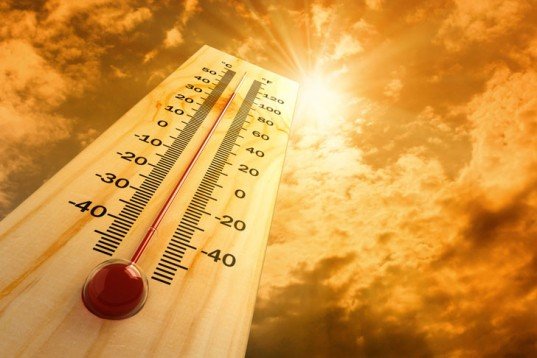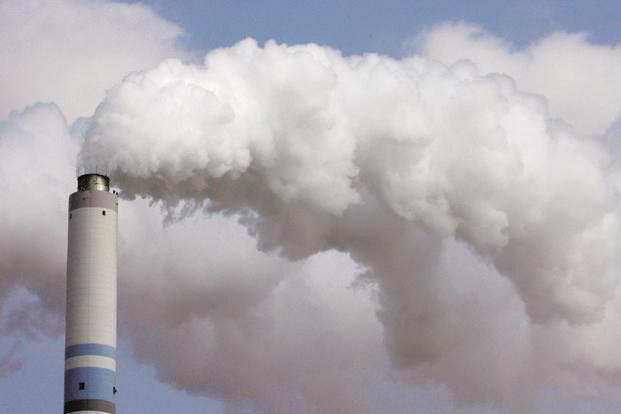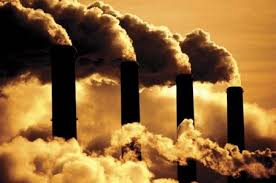2014 is in the running to be the warmest year globally since records began, early estimates show.
In the first 10 months of 2014, global average air temperature was about 0.57 Celsius above the long-term average.
The global figures come in estimates from the UN’s World Meteorological Organization (WMO).
If this year’s current global trend continues for the next two months, the previous record years of 1998, 2005 and 2010 will be overtaken by a narrow margin.
The Secretary-General of the WMO, Michel Jarraud, said the preliminary data for 2014 was “consistent with what we expect from a changing climate.”
In comments released with the new figures, he said: “The provisional information for 2014 means that fourteen of the fifteen warmest years on record have all occurred in the 21st century.”
Michel Jarraud highlighted the impacts of the weather extremes.
“Record-breaking heat combined with torrential rainfall and floods destroyed livelihoods and ruined lives. What is particularly unusual and alarming this year are the high temperatures of vast areas of the ocean surface, including in the northern hemisphere.”
He asserted that the new figures confirm the key trend in climate change: “There is no standstill in global warming.”
This is a reference to the hotly-debated “pause” in global warming which has seen no major increases in temperature since 1998.
The provisional record for 2014 is only slightly higher than for the previous record year of 2010 – one-hundredth of a degree – which was 0.56C above the long0-term average.
However, climate scientists point out that all but one of the warmest 15 years have come in this century.
This suggests that although there have been no big jumps in temperature in the past 16 years, the period as a whole is proving to be exceptionally warm.
The waters of the eastern Pacific are among those to have warmed significantly – a situation which might normally be expected to trigger so-called El Nino conditions that often boost global warmth. However, puzzlingly for scientists, these have yet to materialize.
If 2014 does prove to set a new record for global average temperatures, it will have been without the warming contribution of an El Nino.
The WMO figures say that although “one warm year does not necessarily say anything about long-term climate change” new research shows how human influence made record temperatures more likely.
The WMO report on the state of the global climate is published every year to coincide with the UN’s annual negotiations on climate change, this time under way in Lima in Peru.
According to new figures, a surge in atmospheric carbon dioxide (CO2) saw levels of greenhouse gases reach record levels in 2013.
Concentrations of CO2 in the atmosphere between 2012 and 2013 grew at their fastest rate since 1984.
The World Meteorological Organization (WMO) says that it highlights the need for a global climate treaty.
The WMO’s annual Greenhouse Gas Bulletin doesn’t measure emissions from power station smokestacks but instead records how much of the warming gases remain in the atmosphere after the complex interactions that take place between the air, the land and the oceans.
About half of all emissions are taken up by the seas, trees and living things.
According to the bulletin, the globally averaged amount of carbon dioxide in the atmosphere reached 396 parts per million (ppm) in 2013, an increase of almost 3ppm over the previous year.
“The Greenhouse Gas Bulletin shows that, far from falling, the concentration of carbon dioxide in the atmosphere actually increased last year at the fastest rate for nearly 30 years,” said Michel Jarraud, secretary general of the WMO.

Concentrations of CO2 in the atmosphere between 2012 and 2013 grew at their fastest rate since 1984
Atmospheric CO2 is now at 142% of the levels in 1750, before the start of the industrial revolution.
However, global average temperatures have not risen in concert with the sustained growth in CO2, leading to many voices claiming that global warming has paused.
“The climate system is not linear, it is not straightforward. It is not necessarily reflected in the temperature in the atmosphere, but if you look at the temperature profile in the ocean, the heat is going in the oceans,” said Oksana Tarasova, chief of the atmospheric research division at the WMO.
The bulletin suggests that in 2013, the increase in CO2 was due not only to increased emissions but also to a reduced carbon uptake by the Earth’s biosphere.
The scientists at the WMO are puzzled by this development. That last time there was a reduction in the biosphere’s ability to absorb carbon was 1998, when there was extensive burning of biomass worldwide, coupled with El Nino conditions.
“In 2013 there are no obvious impacts on the biosphere so it is more worrying,” said Oksana Tarasova.
“We don’t understand if this is temporary or if it is a permanent state, and we are a bit worried about that.”
“It could be that the biosphere is at its limit but we cannot tell that at the moment.”
The WMO data indicates that between 1990 and 2013 there was a 34% increase in the warming impact on the climate because carbon dioxide and other gases like methane and nitrous oxide survive for such a long time in the atmosphere.
For the first time, the bulletin includes data on the acidification of the seas caused by carbon dioxide.
Every day, according to the WMO, the oceans take up about 4kg of CO2 per person. They believe the current rate of acidification is unprecedented over the last 300 million years.
The evidence of the atmosphere and oceans underlines the need for urgent, concentrated political action to tackle the problem says Michel Jarraud.
“We have the knowledge and we have the tools for action to try keep temperature increases within 2C to give our planet a chance and to give our children and grandchildren a future,” he said.
“Pleading ignorance can no longer be an excuse for not acting.”
The world’s political leaders will gather in New York on September 23 for a special summit called by UN secretary general Ban Ki-moon.
The hope is that this meeting will kick-start longstanding negotiations that aim to deliver a new international climate change by the end of 2015.
The exact legal nature of this agreement is still the subject of contentious debate.
A new World Meteorological Organization bulletin has revealed the levels of gases in the atmosphere that drive global warming increased to a record high in 2012.
According to the WMO, atmospheric CO2 grew more rapidly last year than its average rise over the past decade.
Concentrations of methane and nitrous oxide also broke previous records
Thanks to carbon dioxide and these other gases, the WMO says the warming effect on our climate has increased by almost a third since 1990.
The WMO’s annual greenhouse gas bulletin measures concentrations in the atmosphere, not emissions on the ground.
Carbon dioxide is the most important of the gases that they track, but only about half of the CO2 that’s emitted by human activities remains in the atmosphere, with the rest being absorbed by the plants, trees, the land and the oceans.
Since the start of the industrial era in 1750, global average levels of CO2 in the atmosphere have increased by 141%.
According to the WMO there were 393.1 parts per million (ppm) of carbon dioxide in the atmosphere in 2012, an increase of 2.2 ppm over 2011.
This was above the yearly average of 2.02 ppm over the past decade.

The levels of gases in the atmosphere that drive global warming increased to a record high in 201
“The observations highlight yet again how heat-trapping gases from human activities have upset the natural balance of our atmosphere and are a major contribution to climate change,” said WMO Secretary-General Michel Jarraud.
While the daily measurement of carbon dioxide in the atmosphere exceeded the symbolic 400 ppm mark in May this year, according to the WMO the global annual average CO2 concentration will cross this point in 2015 or 2016.
Levels of methane also reached record highs in 2012 of 1,819 parts per billion. Concentrations have been increasing since 2007 after a period when they appeared to be leveling off.
The WMO report says that it is not yet possible to attribute the methane increase to either human activities like cattle breeding and landfills or natural sources such as wetlands.
They believe that the rising emissions come from the tropical and mid-latitude northern hemisphere and not from the Arctic, where methane from the melting of permafrost and hydrates has long been a concern.
Emissions of nitrous oxide have also grown, with the atmospheric concentration in 2012 at 325.1 parts per billion, 120% above pre-industrial levels.
Nitrous oxide gas, although its concentrations are tiny compared to CO2, is 298 times more warming and also plays a role in the destruction of the ozone layer.
Recent research indicates that the rate of increase in emissions might be slowing down, but the gases can continue to concentrate in the atmosphere and exert a climate influence for hundreds if not thousands of years.
Scientists believe that the new data indicates that global warming will be back with a vengeance, after a slowdown in the rate of temperature increases over the past 14 years.



